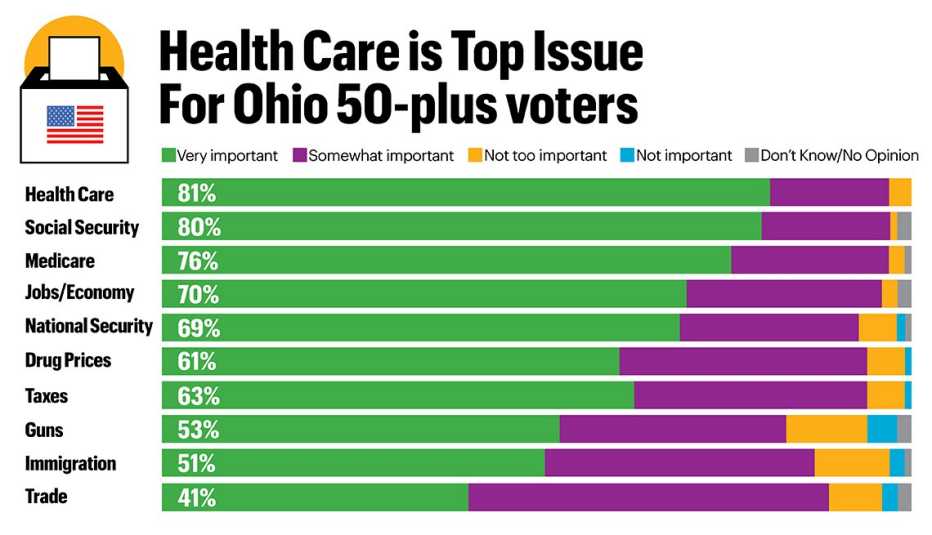AARP Hearing Center


A new Politico/AARP poll finds that health care will be the most important issue on the minds of Ohio voters over the age of 50 when they go to the polls in November, and virtually all voters believe opioid addiction is a serious problem that the government is not doing enough to combat.
Among older voters, 81 percent said health care was the top issue with Social Security ranking second (80 percent) and Medicare (76 percent) rounding out the top three topics that will drive their votes in this year’s midterm elections. The survey also showed support across all age groups for Ohio’s expansion of Medicaid under the Affordable Care Act. Among all registered voters, 72 percent support preserving the state’s Medicaid expansion and 73 percent over the age of 50 want to keep it. The expansion added more than 700,000 Ohioans to the Medicaid rolls.
The opioid addiction was described as a very serious or somewhat serious problem by 91 percent of all voters responding to the survey and 92 percent of 50-plus voters. Among all voters, 26 percent said drug dealers were most responsible for the crisis while 21 percent blamed doctors and 19 percent said drug companies were responsible. Sixty-two percent said the government is not doing enough to address this problem in Ohio.
The Ohio poll is the third in a series of public opinion surveys that asked voters in battleground states about their views on key issues and races in this year’s state and federal elections. AARP has partnered with Politico Magazine to illustrate how important the 50-plus voter is in determining the complexion of the U.S. Senate and House of Representatives as well as state contests across the nation. The two previous polls were conducted in Florida and Arizona.
“With less than 50 days to go before Election Day, candidates in Ohio would be wise to listen to the state’s most powerful voting group: 50-plus voters,” says Nancy LeaMond, AARP’s Executive Vice President and Chief Advocacy & Engagement Officer. “History shows older voters turn out in force in every election and AARP is making sure they are energized and know where candidates stand on the issues.”
Registered voters in Ohio were asked their opinions on a wide range of subjects – from their support for President Trump to the possibility of Russian interference in November’s election, international trade policies and the need to bolster retirement savings. Adults over 50 comprise 36.3 percent of Ohio’s population.


































































More on politics-society
Social Security, Health Care Are Top Concerns for Older Florida Voters
New Politico/AARP poll finds only a quarter of them believe future generations will be better offOlder Arizonans Critical of Congress on Health Care
New Politico/AARP poll reveals voters disapprove of lawmakers’ policies